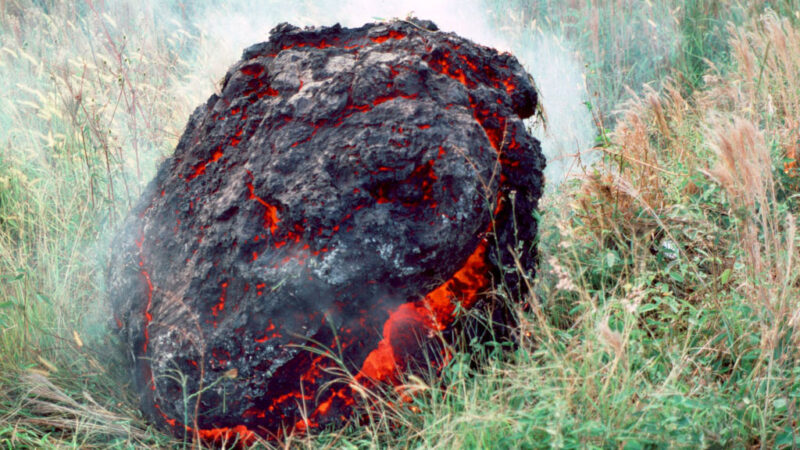Lava Bomb (noun, “LAH-vah BAHM”)
Lava bombs are one type of debris that explosive volcanic eruptions can launch into the air.
When a volcano erupts, it can shoot a mix of ash, crystals, rock and other fragments into the air. Some of those fragments start out as magma — molten rock from deep within the Earth. When magma leaves the volcano, it becomes lava and begins to cool. Blobs of lava thrown into the air turn into lava bombs. Some of these blobs have solid rock at their cores. Others contain gas bubbles. Still others are molten rock, through and through.
Geologists consider a blob of lava to be a lava bomb if it is at least 6.4 centimeters (2.5 inches) across and rounded. That is, as long as it has no sharp angles. Lava bombs can be mostly round, like basketballs, or elongated, like footballs. Sometimes strings of lava stretch to form ribbon-shaped lava bombs. And lava bombs can get big. The largest one ever recorded was a whopping 6 meters (20 feet) across.
Lava bombs can spend up to 10 seconds soaring through the air before landing. As the lava encounters the cold air of the atmosphere, it cools and hardens from the outside in. Smaller lava bombs can cool completely before landing. Larger ones only harden on the outside. This creates a solid coating that cracks like the crust on a loaf of bread. When the inside of a lava bomb is still hot and squishy when it hits the ground, it can land with a splat — flattening out like a cow pat.
Most lava bombs land within 5 kilometers (3 miles) of an eruption. But some travel as far as 10 kilometers (6 miles). Of all threats posed by a volcanic eruption, researchers estimate, lava bombs are the most dangerous to people.
In a sentence
Lava bombs form when globs of lava shoot out of a volcano and begin to harden before hitting the ground.
Check out the full list of Scientists Say.




